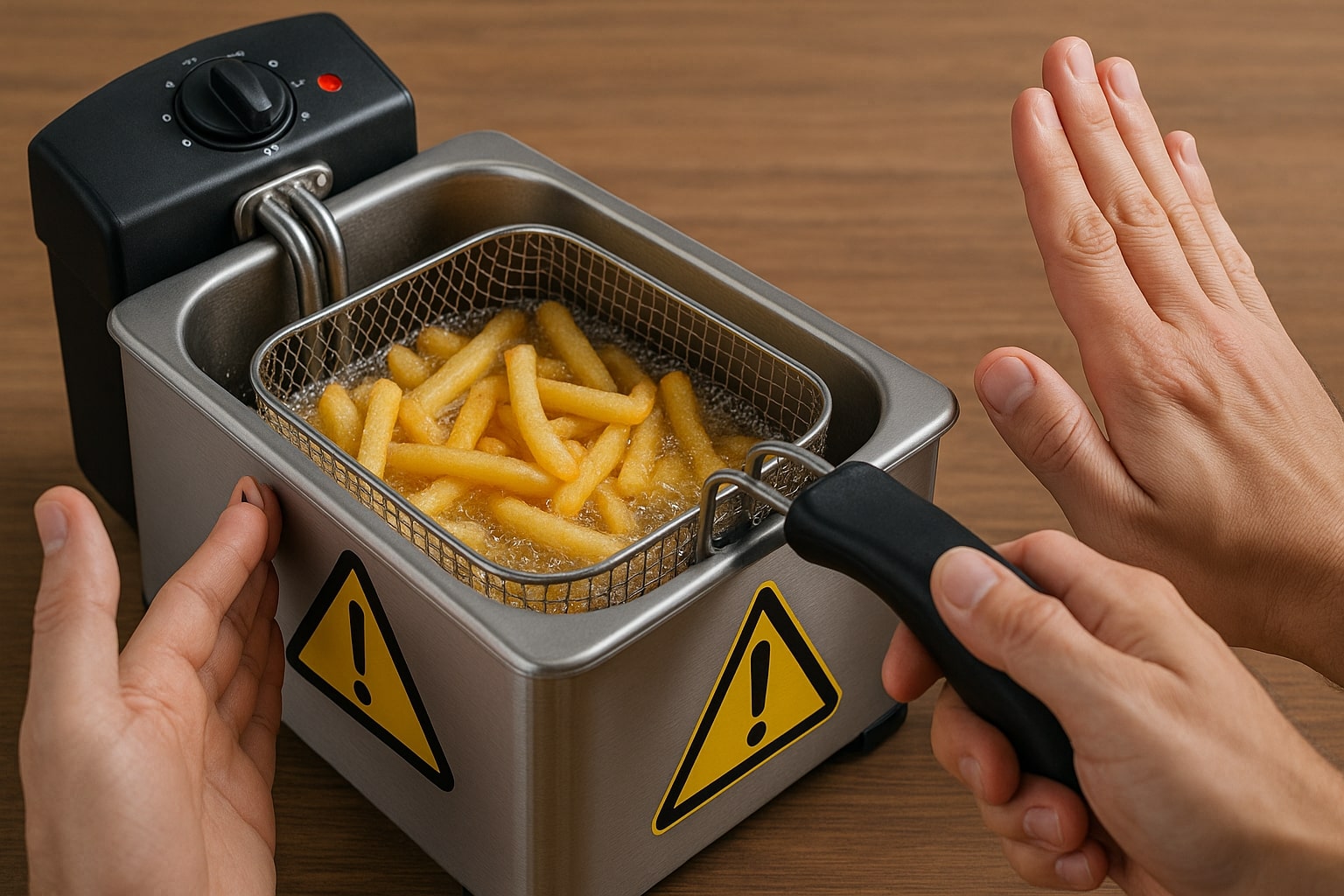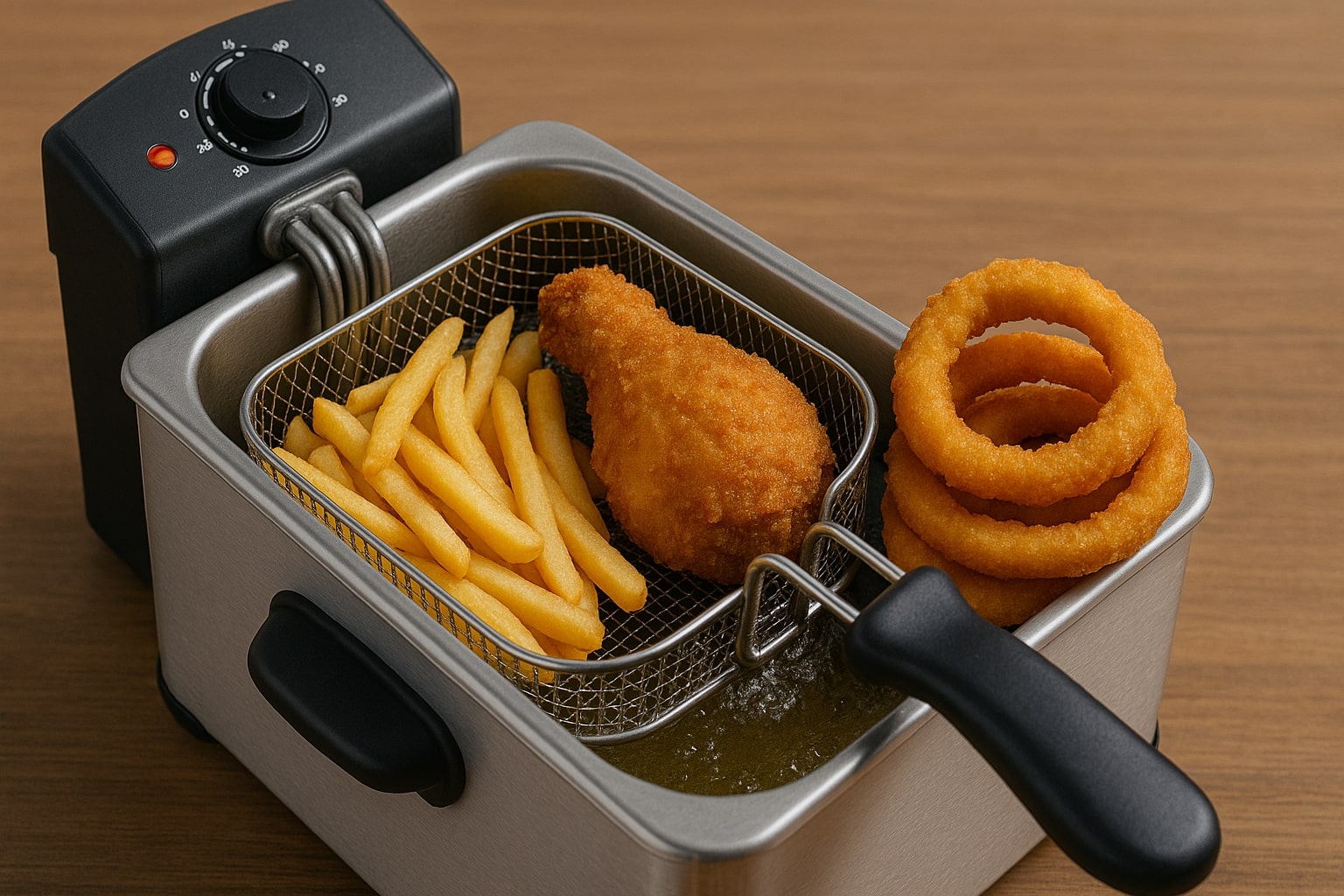
What Is a Deep Fryer and What Is It Used For?
30.07.2025A deep fryer is a kitchen appliance specifically designed for cooking food by submerging it in hot oil, a method known as deep frying..
A deep fryer is a kitchen appliance specifically designed for cooking food by submerging it in hot oil, a method known as deep frying. Whether in commercial kitchens or home settings, deep fryers are essential tools for achieving that golden, crispy texture that pan-frying or baking often can't replicate. From classic favorites like French fries, fried chicken, and doughnuts to tempura and mozzarella sticks, deep fryers allow for even, quick, and consistent cooking. Their thermostatic controls help maintain precise temperatures, which is key to both safety and optimal frying results. In professional settings such as restaurants, fast-food chains, and food trucks, deep fryers are indispensable for high-volume food preparation. Meanwhile, compact models are increasingly popular in home kitchens, offering convenience for preparing indulgent treats. This blog post will explore what a deep fryer is, how it works, and the various ways it enhances culinary experiences both at home and in the food industry.
What Is a Deep Fryer?
A deep fryer is a kitchen appliance designed for cooking food by completely immersing it in hot oil. This method, known as deep frying, ensures a crispy exterior while keeping the inside moist and flavorful. Deep fryers come in various sizes and designs, ranging from compact models for home use to large, commercial-grade equipment for restaurants and catering services. The core function of a deep fryer is to heat oil to a consistent, high temperature—typically between 160°C and 190°C (320°F to 375°F)—to ensure fast and even cooking.
Unlike traditional pan-frying, which only partially cooks the surface in oil, deep frying submerges food fully, allowing for uniform browning and a distinctive crunch. This appliance is especially useful for preparing foods like French fries, onion rings, fried chicken, and churros. Some deep fryers also feature oil filtration systems, timers, and adjustable temperature controls, making them more efficient and safer than basic frying pans. In essence, a deep fryer offers a quick, convenient, and professional approach to creating crispy and delicious dishes.
How Is a Deep Fryer Used?
Using a deep fryer involves several straightforward steps, but proper technique and safety are essential. First, the fryer’s oil reservoir is filled with the appropriate type and amount of oil, usually vegetable, peanut, or sunflower oil due to their high smoke points. The fryer is then turned on and set to the desired temperature using its built-in thermostat. Most deep fryers include an indicator light that signals when the oil is ready for frying.
Once the oil is hot enough, food is placed in a basket or directly into the oil using tongs. It’s important not to overcrowd the fryer, as this can lower the oil temperature and lead to soggy or unevenly cooked food. The food should be fried until it reaches a golden-brown color and is thoroughly cooked inside. After frying, it's removed and drained on paper towels to absorb excess oil.
Cleaning the fryer after use is crucial for maintaining performance and hygiene. Always wait for the oil to cool completely before disposing of or filtering it. With proper handling, a deep fryer can deliver consistent results and make preparing crispy treats both safe and efficient.

What Should Be Considered When Using a Deep Fryer?
When using a deep fryer, safety and food quality should always be top priorities. Several key points should be considered to ensure a smooth and efficient cooking process:
- Oil Selection: Choose oils with high smoke points like canola, peanut, or sunflower oil. Avoid butter or olive oil as they can burn easily.
- Temperature Control: Overheating oil can cause fires or release harmful compounds. Most deep fryers have thermostats—use them to maintain safe, consistent temperatures.
- Proper Ventilation: Deep frying releases smoke and odor. Ensure your kitchen is well-ventilated or use the fryer under a range hood.
- Food Preparation: Pat foods dry before frying to avoid oil splattering. Excess moisture can cause the oil to bubble aggressively.
- Don’t Overload: Placing too much food in the fryer can lower oil temperature and lead to uneven cooking.
- Oil Maintenance: Regularly filter or replace used oil. Dirty oil not only affects flavor but can also pose health risks.
- Supervision: Never leave a deep fryer unattended while in use.
By adhering to these guidelines, users can reduce hazards and improve the overall quality of fried dishes.
What Are the Features of a Deep Fryer?
Modern deep fryers offer a variety of features designed to enhance safety, performance, and convenience. These features vary depending on whether the appliance is intended for home or commercial use, but some are essential across the board.
- Adjustable Thermostat: This allows precise temperature control, ensuring optimal frying conditions for different foods.
- Oil Filtration System: Some advanced models include built-in systems to filter and reuse oil, extending its lifespan and maintaining food quality.
- Cool-Touch Exterior: Prevents accidental burns by keeping the outside of the fryer at a safe temperature.
- Non-Stick or Removable Basket: Makes it easier to lift cooked food out of the oil and simplifies cleaning.
- Safety Lid with Viewing Window: Helps contain splatter while allowing users to monitor the cooking process.
- Overheat Protection: Automatically shuts off the unit if it exceeds safe operating temperatures.
- Compact or Dual-Basket Design: Compact models save counter space, while dual-basket fryers let you cook different foods simultaneously without flavor transfer.
These features not only make deep fryers more user-friendly but also improve overall efficiency and safety during use.

What Can Be Cooked in a Deep Fryer?
Deep fryers offer remarkable versatility, allowing users to prepare a wide range of delicious foods with crispy exteriors and tender interiors. Some of the most popular options include:
- French Fries: Perhaps the most iconic fried food, known for their golden crust and fluffy center.
- Fried Chicken: A deep fryer ensures an even, crunchy coating and juicy meat.
- Onion Rings: Lightly battered and fried to perfection.
- Doughnuts: Soft and airy inside, golden and crisp outside—deep fryers are ideal for dessert preparation.
- Tempura: A Japanese delicacy, tempura vegetables and shrimp cook perfectly in hot oil.
- Mozzarella Sticks and Cheese Balls: The high temperature melts the cheese without overcooking the outer layer.
- Seafood: Items like calamari, shrimp, and fish fillets take on a crisp texture when deep-fried.
From savory snacks to sweet treats, a deep fryer opens up endless possibilities for creative and indulgent cooking.
What Are the Advantages of Using a Deep Fryer?
Using a deep fryer comes with numerous benefits, particularly for those who enjoy preparing fried foods at home or in a professional setting. Some key advantages include:
- Even Cooking: Deep fryers distribute heat uniformly, resulting in consistent texture and color across all food items.
- Time Efficiency: They cook food quickly, making them ideal for busy kitchens or quick meals.
- Oil Management: Many modern fryers have oil drainage and filtration systems, reducing waste and improving safety.
- Precision: Built-in thermostats help maintain the ideal frying temperature, which minimizes the chances of undercooked or burnt food.
- Ease of Use: Most deep fryers are straightforward to operate and include safety features for worry-free cooking.
Whether you’re hosting a party, running a restaurant, or just craving crispy fries, a deep fryer offers a convenient and effective solution. For added energy efficiency and user control, many households now opt for an electric fryer, which heats up quickly and allows for precise temperature adjustments with minimal effort.












 Home Page
Home Page




 0850 480 80 84
0850 480 80 84






